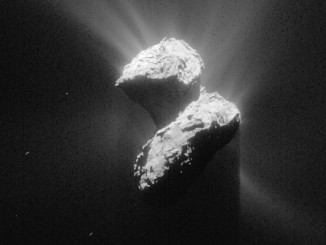Rosetta mission scientist Matt Taylor says the science team is jubilant after the Philae lander captured the historic, first close up images of the surface of a comet and began returning data from its science instruments.
Related Articles

News
Engineers seek to stabilise radio link with comet lander
Emboldened by renewed contact with Europe’s comet lander, engineers are repositioning the mission’s Rosetta mothership this week to establish a reliable a communications link with the dishwasher-sized Philae landing craft, a prerequisite for resuming a science campaign abbreviated by a power shortfall last year.


